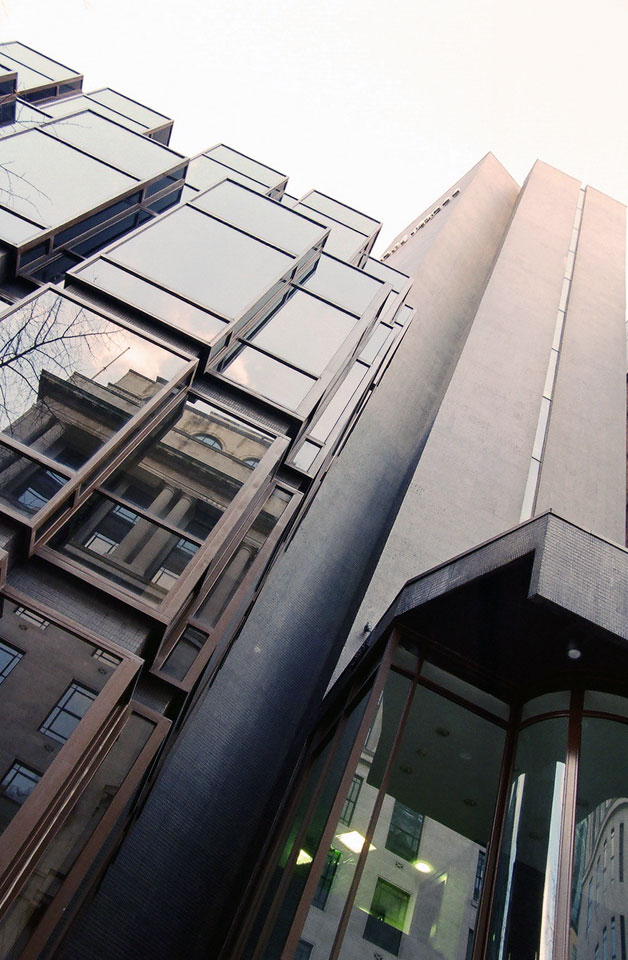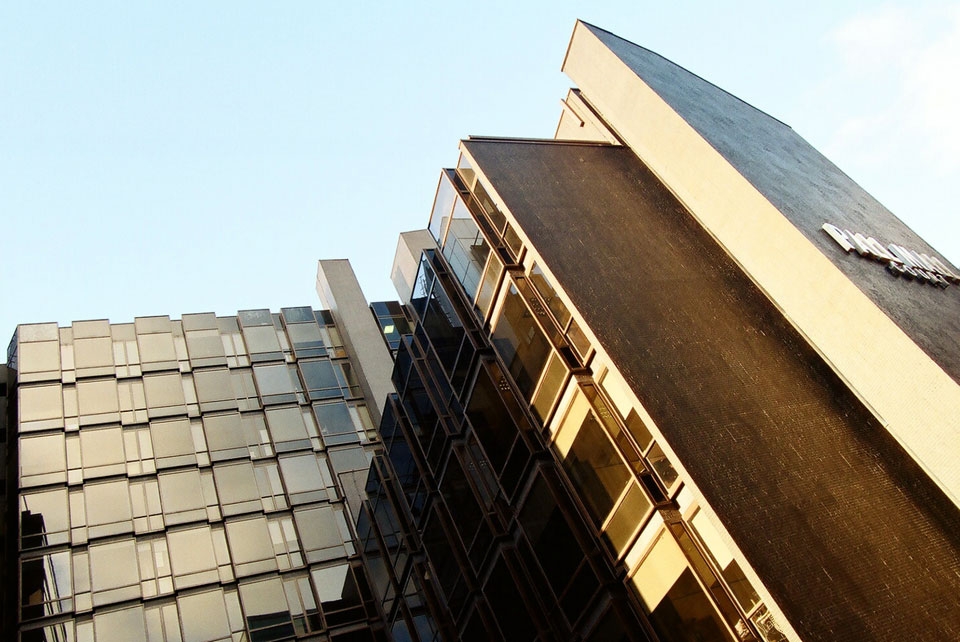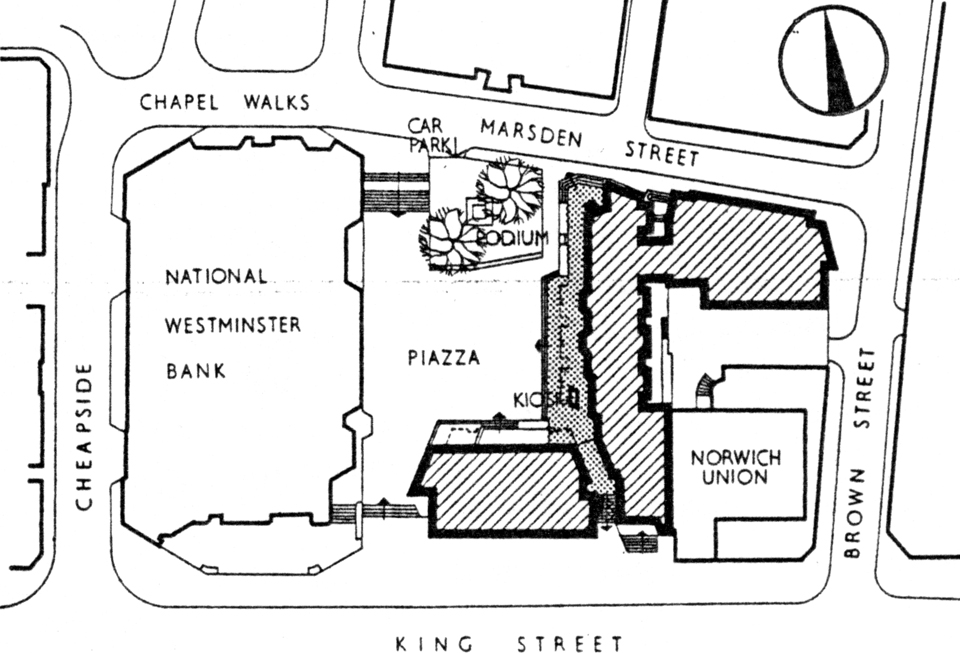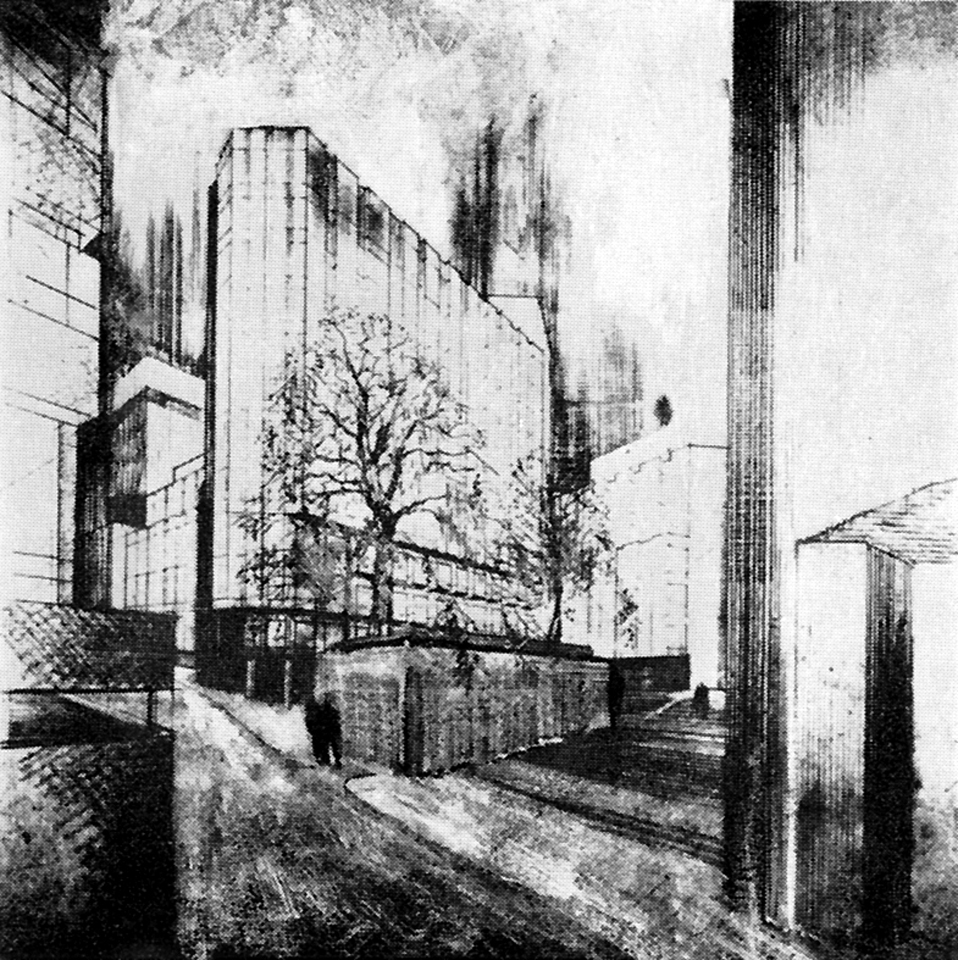Pall Mall Court
1969
Pall Mall Court, with its neighbour, the former Nat West bank, by Casson & Conder are probably the city’s best quality commercial developments of the 1960s. Between the buildings is a raised piazza that exploits the slope of the site and provides covered parking beneath. Pall Mall court itself has a sprawling plan that was wrapped and knitted into the existing street grid. There was a conscious awareness on the part of the designers of the classical and the Victorian character of King Street and its environs; this is manifest in the formal and material resolution. The material palette was minimised to include bronze painted aluminium, bronze glass and an iridescent bronze mosaic tile, this certainly provides a sense of consistency and continuity as one circumnavigates the intervention. The reflective nature of the surfaces was intended as a counterpoint to the solidity of the surrounding banking houses. Formally, the scheme makes a series of gestures to context, the two smaller five-storey blocks, which flank the twelve-storey spine, both have stepped facades that acknowledge the scale of surrounding buildings. Where the wings of the building meet or change direction there is a strong articulation, either by recessed slots or extruded elements. At the ground floor level there was originally a publicly accessible covered passageway that skirted the base of the tower and lead along the eastern side of the piazza from King Street to Marsden Street, this was reminiscent of the canyon like alleys of the Victorian city that promoted the scuttling and bustling character associated with the old city.



